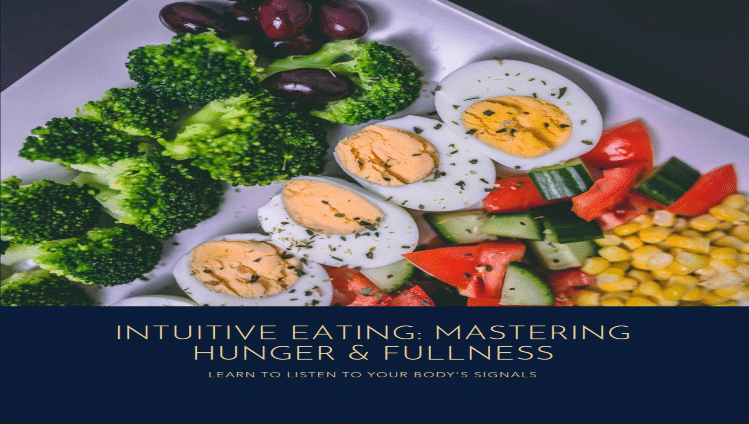Fitness
Building Strength at Home: Exercises Using Only Your Bodyweight for Optimal Workout in 2024

With the current rise in home gym workouts, many have considered bodyweight exercises as a means of avoiding surgeries and gaining better muscle strength. From the novice to the advanced level, it is possible to offer a wide range of exercises that would enable one to achieve his or her fitness goals without necessarily spending lots of money on machines and memberships. In this article, we want to share with you several types of bodyweight exercises for your home workouts and some tips on how to develop your muscles and become stronger in 2024.
1. Push-Ups
In fact, push-ups belong to the most effective and popular types of callisthenics that work chest, shoulders, triceps, and abdominal muscles. To perform a push-up:
- Begin in a plank position, your hands should be placed at the width of your shoulders.
- Bring your torso to the ground until your chest is very close to the floor with your arms by your sides.
- Exhale and push up to the top position while feeling the chest and arm pump up.
2. Squats
Squats are an overall exercise that involves the quadriceps, hamstrings, glutes, and calf muscles of the legs. To perform a squat:
- This exercise involves standing with your feet spread out apart, right next to your shoulders and your arms stretched out in front of you or placed behind your head.
- Sit back into a squat position by bending your knees and thrusting your butt backward, as if you are sitting down onto a chair.
- Bend your knees, arch your back and raise your arms above your head then slowly descend until the thighs are in line with the floor.
- Slide on your toes to bring the ball back to the starting position.
3. Lunges
Lunges are yet another lower body exercise that is somewhat difficult but effective in working out the quads, hamstrings, gluts, and calves, and the abs for stabilisation. To perform a lunge:
- Stand in a comfortable position with the feet approximately shoulder width apart and the hands on the hips or at the sides of the body.
- Advance with one leg and bend at the knee to create near about 90 degrees in knee flexion.
- Ensure that your front knee aligns with your front ankle and your back knee should barely touch the ground.
- Slide your front heel towards the ground to get back to the initial position, then switch sides.
4. Planks
Planks are one of the exercises that primarily strengthen the abdominal muscles while also engaging the shoulder, chest, and back muscles. To perform a plank:
- Starting with your hands flat on the ground and directly beneath the shoulders, with your body in a straight line from head to heels.
- Suck in your stomach and hold it, do not bend your back or allow your hips to sink down.
- Begin by doing as many reps as possible while focusing on quality and aim for at least 30 seconds.
5. Burpees
Burpees as any kind of physical workout incorporate the whole body and impact the muscles and the cardiovascular system. To perform a burpee:
- Start the exercise by standing with your feet spread slightly more than shoulder width apart.
- Kneel down with your buttocks touching your heels and place your palms firmly on the ground in front of you.
- Bounce your feet back to the plank position with your arms extended.
- Perform a pushup, then immediately jump your legs back into squat position.
- Jump off the ground as high as possible with the arms stretched up to the sky; bend the knees and slowly return to the first position to begin the subsequent repetitions.
Conclusion
You can consider bodyweight exercises as one of the most convenient, easily accessible, and efficient means of training for strength, endurance, and general conditioning without leaving the comfort of your home. Thus, it will be possible to achieve the set fitness goals in 2024 and the following years in case when workout includes a range of the bodyweight exercises and the intensity and complexity of movements are gradually increased. Always be in tune with your body and make sure to exercise correctly if you want to gain the best results. You only need to have commitment and determination and you will be able to develop strength and change your body without going to the gym.
Diets
Understanding Your Body’s Authentic Cues of Hunger and Fullness through Intuitive Eating

The principles guiding the intuitive eating process are based on unconditional permission to eat and ten principles that include eating when hungry. In contrast with most diet regimens where individuals are limited in what they can eat and when they can eat it, intuitive eating is about paying attention to one’s body and respecting it. This holistic article will further discuss more about intuitive eating, its advantages, and helpful suggestions towards the attainment of IE.
Understanding Intuitive Eating
Intuitive eating is an approach to eating that recognizes and relies on the internal cues something within you, as you, as a person, understands that you have within you the ability to make the right choices with respect to food. Unlike popular dieting trends that seek to eliminate hunger or dictate when and what to eat through other people’s rules and regulation, intuitive eating is about listening to your body and supporting it as it shares signals that you can understand and honor.
Key Principles of Intuitive Eating:Key Principles of Intuitive Eating:
- Reject the Diet Mentality: Health over weight loss – say no to our long held mindset of dieting and categorizing foods into good and bad foods.
- Honor Your Hunger: When you feel hungry follow that sensation and do not force yourself to eat either to avoid eating or just out of routine.
- Make Peace with Food: Some of the principles are: Permit yourself to eat and try all foods without feeling some level of guilt or remorse.
- Challenge the Food Police: Question the mental scripts that defend the status quo of eating behaviour and its associated quantities.
- Respect Your Fullness: The first one is listening to your body’s fullness signals and breaking from the eating table when the donut is satisfied.
- Discover the Satisfaction Factor: Opt for foods that give you joy, which can be understood not only as the food you like to eat but as the food that is good for you.
- Cope with Emotions without Using Food: If one is always stressed, bored or sad, instead of going for a quick fix from a pantry, they can seek other forms of comfort.
- Respect Your Body: Love your body size, shape, and all of its capabilities without being influenced by outside forces.
- Exercise for Pleasure: Develop physical activity that you like and that provides you with a sense of well-being, without focusing on calories or weight.
- Honor Your Health with Gentle Nutrition: Eat foods in ways that do not compromise your health and your palate and foods that will make you happy.
Benefits of Intuitive Eating
Some of the advantages of incorporating the application of IE include; Intuitive eating can improve your health in several ways; Both your physical and psychological well-being will benefit from eating in this method.
Physical Benefits:
- Improved Relationship with Food: In other words, if you’re able to start listening to your body and understand the cues it gives you, you’ll learn to prevent developing such disorders when it comes to interactions with foods.
- Better Digestion: Particularly if one is not restricted with the time of eating, acknowledging the feeling of hunger and feeling of fullness has health benefits for the digestive system.
- Balanced Energy Levels: Getting hungry signals that you have to eat bare, corrects your glucose level and avert low energy episodes.
Mental and Emotional Benefits:
- Reduced Stress and Anxiety: Eliminating eating or dieting rules can help overcome the problem associated with stress and anxiety of eating habits and body shape.
- Enhanced Body Satisfaction: Stated in other words, unconditional acceptance of one’s body along with the corresponding respect results in a positive shift in how one perceives their body and, consequently, in the improvement of self-acceptance.
How to Practice Intuitive Eating
Intuitive eating therefore is a process of learning that a person has to take to ensure that he or she is fully aware of the things that happen around him or her.
Tips for Practicing Intuitive Eating:Tips for Practicing Intuitive Eating:
- Start by Listening to Your Body: We must learn to go through the day being more sensitive to the hunger and fullness signals that are produced by our body.
- Eat Mindfully: Take time to chew well and appreciate the flavor, finesse of your food before swallowing it.
- Give Yourself Permission to Eat: Both free your mind and your body from food guilt and free your mind and your body up for all foods.
- Practice Self-Compassion: It is essential to be compassionate towards oneself and accept that intuitive eating is a new skill that progresses in a zigzag manner.
- Seek Support: Seek out friends, family, or maybe even some health care professionals that you trust and who will support an intuitive eating approach.
- Stay Flexible: It is essential to eat liberally and to allow yourself to eat foods of a variety without having to worry about the consequences that may come with the food choices that are being made.
- Practice Self-Care: To help the body, mind, and spirit to stay healthy, nourish them by giving time to sleep and rest, fun activities, and relaxation.
Exploring the Nuances of Intuitive Eating
As you will discover, there are significant differences between the theories and practices of Intuitive Eating and the actual practice of the concepts.
Tuning Into Hunger and Fullness Cues:
- Physical vs. Emotional Hunger: It is crucial to recognize the difference between hunger resulting from the body’s need for nutrition and the hunger that stems from psychological factors when trying to practice intuitive eating. While physical hunger can manifest through sensations in the body, for example hunger pangs or tiredness, emotional hunger on the other hand is an emotional response usually brought about by stress, boredom or sadness.
- Variability of Hunger and Fullness: It is worth understanding that hunger and fullness signals are not constant and stable day by day and even meal by meal due to fluctuation in the activities, stress, and hormonal changes. Listening and responding to these signals is a daily process of continuously monitoring and modifying your eating habits.
Honoring Food Preferences and Cravings:
- All Foods Fit: Intuitive eating is a significant concept because it allows one to give themselves permission to eat all foods. Intuitive eating means respecting your preferences and desires that is why regardless of whether you are eating salad, you should eat it with the same pleasure as when eating desert.
- Sensory Satisfaction: Focusing on the licking of foods and also the feeling of foods in the mouth play an important role in promoting the eaters satisfaction with foods.
Cultivating Body Trust and Acceptance:
- Body Neutrality: While body positivity is a concept of acceptance and appreciation of all body types, body neutrality aims at giving the body the respect it deserves without considering the form. Choosing not to be so fixated on the body and processes leading to it might be useful on your road to diverse body acceptance.
- Mindful Movement: Intuitive eating is not only applicable to the aspect of the food we take but also encompasses the movement and exercise we take. One of the objectives of intuitive movement is to do physical activities that give you the feelings of fun and enjoyment rather than for the purpose of dissipating calories or remodifying the body.
Conclusion
Intuitive eating is one of the most compassionate and real-life approaches to feeding your body and attending to the relationship between food. This approach advocates that one needs to pay attention to his or her body’s signals, and respect them to get empowered and feel well when it comes to eating foods. This is important to remember: intuitive eating is not about achieving the ideal, but it is a journey towards positive change and finding oneself on the way to better wellness.
FAQs about Intuitive Eating
1. Is intuitive eating a form of dieting?
- I must say that intuitive eating is not a diet. It is an eating style which encourages mindful intake of foods based on the natural hunger and satiety signals rather than the rules governing dieting.
2. Is it possible for anyone to engage in intuitive eating?
- Yes, intuitive eating is possible for everyone regardless of age, gender, ethnicity, or any other factors. This can be helpful for those who have previously had issues with conventional diets or eating disorders.
3. Does Intuitive eating help in weight loss?
- Intuitive eating is not necessarily a diet designed for weight loss, but rather a healthful eating model that ought to be embraced. That said, weight fluctuations might be expected for some individuals as a result of embracing IE.
4. When can one expect to begin noticing changes with intuitive eating?
- The process of achieving positive results while practicing intuitive eating lasts different amounts of time for different individuals. Though some may derive the benefits within a short period, others may notice the effects after a longer period. It is all about being patient, kind to oneself, and steadfast.
5. Can Intuitive eating help in cases of emotional eating?
- Indeed, intuitive eating can be beneficial in this aspect as it enables the individuals to address their emotions without resorting to eating. As part of intuitive eating, people are encouraged to identify and manage their emotional eating causes.
Blog
What Is the Best Protein Source for Your Body?

Poking at the nutritional value, protein is one significant nutrient that is used in the body in the building of tissues, repair and various other functions. Protein belongs to a type of macromolecule which is composed of amino acids which are common known as the vital macromolecule. It is important for muscle building, immune system, and several functions within the body.I But while there are many sources that you can get protein from, how do you tell which one will be healthier for your body? This is going to be a complete guide on Protein sources/ Types wherein we will talk about all forms of protein and then identify what type of protein will suit you the best.
Protein and its relevance in the body: A look into definition of Protein
Like carbohydrates and fats, protein is a macronutrient, meaning that it is important to the body for proper functioning. Unlike fats and carbohydrates, there is no protein storing process in our body, which means we need to include it in our diets.
Key Roles of Protein:
- Muscle Repair and Growth: Protein will play a vital role in muscle repair and building and it is therefore important to have it after exercise.
- Enzyme and Hormone Production: They all are made of chains of amino acids; many enzymes and hormones in our body are made of proteins.
- Immune Function: Proteins are vital structures of the body and are vital in the formation and function of the immune system.
- Transport and Storage of Molecules: Protein is involved in the movement of molecules and nutrients within a cell and they act as storage places.
Types of Protein Sources
Sources of Protein are again both animal based as well as plant based. In turn, all the mentioned sources have their advantages and useful properties, as well as disadvantages and vices.
Animal-Based Proteins
Now, animal based proteins are normally referred to as complete proteins because they contain all the essential amino acids that are required by our body. Some common animal-based protein sources include:Some common animal-based protein sources include:
1. Meat:
- Beef, Pork, and Lamb: They are protein foods and also contain other nutrients compounds such as iron and zinc. However, they are also higher in saturated fats and this makes them unfavorable for use in preparing foods for consumption.
- Chicken and Turkey: Said meats are very rich in protein and have less fat than the red meats though containing a higher cholesterol level.
2. Fish and Seafood:
- Salmon, Tuna, and Mackerel: These are fatty fish, which are also sources of proteins and should also carry omega-3 fatty acids which are good to the heart.
- Shellfish: Other seafoods, such as shrimp, crab and lobster are also other hardy protein sources with relatively low fats.
3. Dairy Products:
- Milk, Cheese, and Yogurt: Meals like yoghurt, butter, cheese are really important as they contain proteins and calcium which is vital for building bone types.
- Greek Yogurt: Protein smooth yoghurt: This type of yoghurt contains more protein than the standard yoghurt and is recommended for consumption by individuals who want to get their proteins through snacks.
3. Eggs:
- Whole Eggs: Eggs are considered to be one of the heathiest foods with all the nutritious value including proteins, vitamins, and minerals. The white part of the egg is rich in protein while the yellow part, known as the yolk, is rich in protein, vitamins and fats.
4. Plant-Based Proteins
Protein from plants can be seen to be more popular and common in diet than before most especially for vegetarians and vegans. Although multiple plant protein sources are incomplete, cooking them together and included with other foods will result in all the essential amino acids. Some common plant-based protein sources include:Some common plant-based protein sources include:
Legumes:
- Beans, Lentils, and Chickpeas: These are good sources of protein and these are good sources of fibers. They also contain very small proportions of fat and can assist in complementing correct cholesterol levels in the body.
Nuts and Seeds:
- Almonds, Walnuts, and Chia Seeds: These are good sources of protein and healthy fats. They have to be prepared healthily in order to provide this benefit. It can be used as an ingredient of food products and it can also be incorporated into meals and snacks to boost their protein content.
Whole Grains:
- Quinoa, Brown Rice, and Oats: Through research it is evidenced that whole grains foods contain moderate protein content besides fiber and other nutrients. It is proven that quinoa is a complete protein, which can make it literally priceless for people who decided to go plant-based.
Soy Products:
- Tofu, Tempeh, and Edamame: Soy products are some of the rare products that are plant derived and which are also complete proteins. They can be utilized in different preparations and served in a between-plates manner.
Vegetables:
- Broccoli, Spinach, and Brussels Sprouts: Even though vegetables are not exceptionally rich in protein as compared to meats or dairy products, they do have a certain amount of the nutritional macromolecule and are loaded with numerous other substances.
Comparing Protein Sources
In selecting the best protein, one should first analyze different aspects in relation to protein quality, digestibility and the total nutrient value of the food product.
Protein Quality
Nutritional quality of protein depends on its ability to supply essential amino acids or how easily it is utilized in the body. Animal proteins are superior to plant proteins in most cases because the animal-based proteins contain a complete amino acids chain. However, there are certain plant protein sources such as quinoa and others which may also contain all the essential amino acids.
Digestibility
The rate that protein gets digested and absorbed in the body is also of significance. Word animal proteins are known to be of higher biological value than plant proteins since the former has better digestibility. Still, there are some of the plant proteins that for one reason or another are insoluble, or their digestion is very poor, although if combined, they may become rather well digested.
Nutritional Content
In essence, it is not just the quantity but also the quality of the protein that counts. The nutrient density of a protein source should be put under consideration. For instance, common items such as salmon are rich in protein and omega3 fatty acids that are beneficial to the heart. While beans and lentils provide protein, fiber and vitamins they provide, other benefits include.
Protein meal types: The best proteins to choose for the respective purposes
Protein foods that hold the highest rating are determined by several factors including muscle gain, weight management and overall health goals .
For Muscle Building
Most of the structural and enzymatic proteins need high-quality, complete proteins to enable muscle growth and repairing. Protein sources from animals are preferred due to their composition of all essential amino acids and high biological values they possess; the best example is chicken, fish, and diary products.
- Chicken Breast: Lean meat that offers about 31% high protein concentration with fifty-grams protein per one hundred grams.
- Salmon: Apart from being high in protein they are also sources of Omega-3 fatty acids which are important in rebuilding muscle tissue and supporting the heart.
- Greek Yogurt: Contains approximately 10 grams of protein per serving per 100 grams and could serve as a very suitable snack after training.
For Weight Loss
Protein has benefits for weight loss plan since it increases satiety and maintains muscle mass while on low calorie intake plan. The lean proteins with less fat should be consumed to enable reduction of weights in the body.
- Turkey Breast: An illustration of a lean meat with protein content of roughly 290 g per 100 g.
- Lentils: They are rich in protein and fiber; which makes you feel full for longer, and promotes bowel movement.
- Tofu: A widely-used, lean protein that can be incorporated into different meal preparations.
For Overall Health
From the food point of view, one should consume all types of proteins in order to be as fit and healthy as possible.
- Eggs: An advantageous food, containing protein and other essential nutrients in the diet.
- Quinoa: A protein complex that also holds fiber as well as other nutrients like magnesium and iron.
- Almonds: A good source of protein and healthy fats, which could contribute to the healthy functioning of the heart.

Balancing Animal and Plant Proteins
Though animal protein sources are usually superior in terms of nutritional quality to plant protein sources, they are not without their advantages; they usually provide fiber and phytonutrients. It means that making a combination of both in equal proportions can make it possible to have a balanced diet.
Tips for Balancing Proteins:
- Combine Different Plant Proteins: Pat yourself on the back if you fancy beans with your rice or seeds in your oatmeal as this is good enough for a complete protein package.
- Incorporate More Fish: Try to incorporate some form of fish into your diet at least two times a week to get enough protein and omega-3.
- Snack on Nuts and Seeds: These are easy to come by and can help you increase your intake of protein during the day and in between meals.
FAQs about Protein Sources
What is the importance of protein in the human body?
- Since protein is one of the macronutrients, it plays a significant role in growth, tissue repair, and body tissue maintenance. Muscle building, enzymatic synthesis and hormone synthesis, immune response, nutrient transport and storage are some of the functions of this vitamin.
What do you understand regarding complete and incomplete proteins?
- These are proteins that contain all the nine amino acids which are not synthesized in the body. The animal based complete proteins include meats, fish, eggs, and dairy products while plant-based complete proteins include quinoa and soy. These are proteins that are missing one or more amino acids and they are found in most plant based foods.
Can one consume enough protein from plant sources?
- Yes, it is possible to have your protein requirement met from plant products alone. When you combine two or more plant based protein sources such as beans and rice or hummus and whole grain bread, then you are adequately supplying your body with every amino acid that it needs.
Which foods are rich in animal based proteins?
- Some of the recommended animal-based protein foods include; Chicken breast, salmon, Greek yogurt, eggs, and lean beef and pork. These sources are sources of proteins and other nutrients that are needed in the body system.
Which foods contain the highest amount of protein?
- The best sources of plant proteins include lentils and beans, tofu, quinoa, nuts and seeds and whole grain products. They add protein, fiber, and the appropriate vitamins and minerals to the human body.
Conclusion
The decision-making process of the best protein sources varies with the health and nutritional needs of an individual. It is possible to conclude that animal proteins and plant proteins have their advantages and can be included in our diet. Make sure to try as many different proteins as possible so that the body gets all the essential amino acids that it requires.
This way you are informed and aware of the various protein sources available out there to provide for your nutritional needs. Be it the need to gain muscle mass, shed a few pounds, or just live a healthier life, there is a protein out there for you.
Fitness
Eco-Friendly Travel: Minimize Your Environmental Impact

Exploring the world is a unique opportunity which provides opportunities for personal growth and can also have a strong influence on the environment. Given that sustainability is slowly becoming a major concern in the world, many travelers are always looking for ways that they can adopt sustainable measures while they are on their tours. In this travel tips guide, you will learn how to have a responsible travel adventure that protects the environment while having fun.
1. Choose Eco-Friendly Accommodations
When thinking about your accommodation, try to select environmentally friendly places to stay at. More establishments nowadays, particularly the hotels and resorts, have been environmentally conscious and have integrated some green practices, which include the use of renewable energy, water conservation and waste minimization. Search for such ratings as LEED (Leadership in Energy and Environmental Design) or Green Key that proves the facility’s environmental responsibility. Also, one should think about choosing such accommodations as eco-friendly lodges or boutique hotels that do not use a great amount of energy and resources and try to help locals.
Examples:
- LEED-certified hotels: They are special hotels due to their policy of implementing and enforcing sustainable construction and management procedures.
- Green Key hotels: All these companies adhere to high levels of compliance on environmental management and social issues.
- Eco-lodges: These lodges are mostly built in areas, which are naturally endowed, and are founded on the core values of conserving the environment and supporting the local communities.
2. Travel Light
Carrying little in your luggage not only helps in the ease of travelling but also lessens the load and hence the emissions in the mode of transportation. Pack light and reduce the use of disposables such as water bottles, shopping bags, and toiletries to help in reducing dumping of plastics into the environment. The lesser the weight you carry in a bag, the less fuel used by airplanes, buses, and other means of transport.
Packing tips:
- Capsule wardrobe: It is advisable to select clothes that can be worn in combination with others.
- Multi-use items: Pack intelligently; items that are multi-functional like the sarong which can be used as towel, blanket or a dress code.
- Reusable items: Choose a reusable, long lasting item such as, a stainless steel water bottle, silicone travel bottles for shower gel or liquid soap, and a collapsible shopping bag.
3. Use Public Transportation
Avoid car rental or engaging in taxi services instead prefer to use the buses, trains and subway systems. All these are not just eco-friendly but also provide a cultural tourism perspective to tourists visiting these destinations. If you are in an area with bike-sharing options, one can opt to cycle to go around the city. Public transport system implies the removal of many personal cars thereby cutting down on emissions of greenhouse gases and air pollution.
Benefits:
- Cultural immersion: Using public transport, one will experience the true feel of the locals.
- Cost-effective: In most cases it is more economical than hiring a car or using taxis for transportation.
- Eco-friendly: Helps you cut down on your carbon emissions greatly.
4. Support Local Businesses
Take locally sourced meals from local restaurants, food markets, and stores instead of those international franchises.” Food production sourcing from local farmers means that many of the locally produced items will be sold here, thus favoring local production over imports, this in a way lowers the carbon footprints since the transport of food items over long distances has adverse effects on the environment. Eating foods from around you also means that you get to enjoy fresh meals as well as encouraging farm agriculture and farming. It is the effect where instead of spending money on imports, locally produced goods are bought which has the trickle effect of supporting employment for the people in the region.
Examples:
- Farmers’ markets: Buy fresh fruits, vegetables and other crops produced by local farmers and jack of different local homemade products.
- Local eateries: It is recommended to select the restaurants that can prepare food using products produced by nearby farmers.
- Handicrafts: Support locally made products particularly the talented artists who are able to design souvenirs which could be of high demand among tourists.
5. Reduce, Reuse, Recycle
Of equal importance, think about the garbage that you produce when you are on the road. Bring some of your own containers whenever you’re on the go – refillable bottle, coffee cup, shopping bag etc. Most countries worldwide have operational recycling initiatives, so it is wise to acquaint oneself with the norms and engage in noble causes. Waste management means reduction on the amount of litter deposited in the dumping sites and environmental polluting of habitats.
Tips:
- Reusable utensils: Avoid single-use, plastic items and utensils by bringing your own reusable cutlery.
- Refillable containers: Reuse your containers to avoid using the disposable ones whenever possible and for hygiene products one ought to consider using refillable toiletry containers.
- Eco-friendly products: Use packaging that is necessary and reduce the use of plastics by opting for those containers that are recyclable.
6. Choose Your Tour Operators Wisely
When selecting the tours and activities to partake in, select organizations that have sustainable measures in place. It is essential to search for accommodations that are focused on environmentalism, community welfare, as well as sustainable tourism. Do not engage in activities that use animals for business or entertainment or destroy their habitats. Ecological or/and small-scale tour operators usually have a direct collaboration with the locals and make sure that the impact of tourism is positive for both individuals and nature.
Criteria to consider:
- Environmental impact: Select tours with least impacts on the environment and its natural resources.
- Community involvement: Support operators that facilitate and offer positive impacts to local people.
- Wildlife protection: Refrain from the tours that include inadmissible touches with the animals and the destruction of their habitats.
7. Conserve Water and Energy
As you would do in your own home, remember your water and energy conservation etiquette while you are traveling. Reduce shower duration, switch-off existing light and electrical appliances after use, and avoid frequent usage of the fan or heater. Thus, the efficient use of water and energy prevents overexploitation of natural resources and is beneficial to the environment.
Practices:
- Water-saving techniques: Carry a refillable bottle that filters water, shower for less time and use the same towels and bed linens for more than one use.
- Energy-saving practices: Be sure to switch off lights when not in use, remove any devices that are not in use and use energy-star rated appliances.
8. Offset Your Carbon Emissions
So, you can purchase carbon credits which are essentially retired carbon offsets to compensate for the emissions that come with flights. These programs finance emission cuts, including activities like reforestation, renewable power and technologies and efficiency projects. Carbon offsetting enable you to conclude that you are responsible for the carbon emission that you have produced in the process of travelling by funding projects that would make the environment better.
How to offset:
- Calculate your emissions: Age Your carbon emissions can be calculated using online searches.
- Choose a reputable program: Choose carbon offset projects that are certified, which have quantifiable and proven outcomes.
- Make a donation: Support causes that can be addressed through afforestation, utilization of green energy sources or preservation of species.

9. Essentials like food in local markets respect local cultures and the need to protect the environment
Adhere to etiquette as regard to the cultures and territories of your travel. The rules include how to approach, handle and behave when in contact with wildlife, bearing in mind that one should only read in delimited paths within natural habitats and concerning local customs and traditions. Responsible tourism refers to the approach to travel and tourism, which entails being cautious and thoughtful about the effects caused on the destination areas and the inhabitants.
Guidelines:
- Cultural sensitivity: There is nothing as disturbing as learning about certain cultures that you violated while on a holiday.
- Environmental protection: For those who wish to explore more rural and remote areas, in order to minimize the damage that you can do to the environment, try to abide by the principles of Leave No Trace.
- Wildlife respect: DO NOT approach within the range of sight pulling abiotic variables and tend not to interfere with the animal homes.
10. Educate Yourself and Others
Get advice with useful tips and tricks about sustainability when traveling and do not hesitate to pass that information to others. As more people begin to appreciate the fact that travelling sustainably is crucial, the more imitating results will be accumulated. Here we should encourage friends and family members for the eco-friendly habits that they must follow while they travel. As the world goes through a transition to sustainable travel, raising awareness can spearhead a culture of responsible tourism.
Ways to educate:
- Read and research: Follow the breath working examples and avant-garde news of sustainable tourism.
- Share your experiences: Create a Twitter account, weblog or thread on a travel message board to share your sustainable travel ideas and stories with other tourists.
- Advocate for change: Areas for improvement include: Support measures for sustainable tourism and associated policies and measures.
Frequently Asked Questions (FAQs)
What are some basic ways that people can limit their negative impact on the environment when they travel?
- Eco-friendly tips for tourists: Take public transportation, use eco lodgings, buy from local sellers, and do not consume single-use products.
How can one look for sustainable accommodation?
- If a hotel has a LEED or Green Key certification, has been reviewed on other eco-friendly travel sites, has renewable energy use, water-saving programs, and waste disposal programs, then consider it for lodging.
Is it costly to go green?
- It is also quite possible to have sustainable travels at more attractive rates. Travelling by public means, buying local souvenirs, and selecting green hotels do not always have to be expensive. Also, ideas such as minimizing waste and energy-saving can help to cut costs.
Explaining the mechanism of carbon offset programs?
- Carbon offset programs let you counterbalance flight emissions by funding other projects that decrease greenhouse gas emissions. These projects can involve afforestation, energy from natural sources, and the preservation of the environment. It is easy to find out how much carbon you produce and then decide which program to contribute to.
Why is it necessary to purchase products from local sellers while traveling?
- Purchasing goods and services from the locally based companies promotes local employment, economic development and conserves the environment through the transportation of goods over a long distance. It also helps to have a more realistic travel impact and promotes sustainable agriculture.
What should I consider when deciding on a sustainable tour operator?
- Increase your chances of finding tour operators of environmentalism, community support, and right tourism. Stay away from operators that abuse animals or the natural environment. Look for certifications or reviews that demonstrate that they are environmentally-friendly.
What measures can be taken, which will help me not to be a destructive tourist?
- Reduce waste to the surrounding environment by applying the ‘’carry the bare necessities’’ rule in relation to items like a water bottle, coffee cup, shopping bag, and cutlery. Lastly, the guidelines are to prefer products with little packaging, to recycle locally, and to reduce using plastic that is use-and-throw.
Can you list any good examples of sustainable travels?
- Responsible travel is the practice of adhering to specific habits and international standards to cause minimal harm to the environment and culture of the visited places; sustainable traveling habits include the use of public transportation, staying in eco accommodating places, supporting local businesses, conservation of water and energy, carbon footprint neutralisation, cultural and environmental sensitivity, and spreading awareness of sustainable travel.
What sources should I consult more in order to remain current on sustainable tourism practices?
- Get yourself a few books, articles and blogs that you’ll be ideally reading on matters concerning sustainable travels. Use hashtags, tag environmental organizations, follow related influencers, and especially those who travel. Be present in recognizable and trust-worthy working practices such as workshops, webinars, conferences dedicated to sustainable tourism.
Conclusion
Sustainable travel is the act of taking a conscious decision to minimize the effects or footprint that one creates within a specific community or geographical area. Incorporating the mentioned above tips into your travel plans will enable everyone to support the preservation of the environment while at the same time exploring the wond Mellon of the world. Just to remind, each action with a focus on sustainability is important and contributes to a positive change.
To travel sustainably is not only positive for the environment but also enjoyable; an opportunity to really experience a new place and its people. These practices should be put to practice today to be part of the change that the world is taking towards sustainability in tourism.
-

 Blog3 years ago
Blog3 years agoBest Makeup Trends In 2024: Look Beautiful this year
-

 Fitness4 years ago
Fitness4 years agohow to Improve Your Photographic Memory? an ultimate guide
-

 Appliances1 year ago
Appliances1 year agoIntroduction to Network Cards: Evolution, Types, and Technologies
-

 Appliances1 year ago
Appliances1 year agoIntel vs. Apple Silicon: CPU Showdown for Laptops
-

 Appliances3 years ago
Appliances3 years agoBlack Friday Home Appliance Deals: Our Exclusive Sneak Peek On The Early Black Friday Appliances Deals
-

 Technology1 year ago
Technology1 year agoHarnessing Solar Power On-the-Go: The Rise of Foldable Solar Panel Installations
-

 Blog1 year ago
Blog1 year agoBiotech Breakthroughs: Innovations in Gene Editing, CRISPR Technology, and Personalized Medicine
-

 Blog2 years ago
Blog2 years agoTop 5 Best Housewarming Gifts to Warm Someone’s New Home
